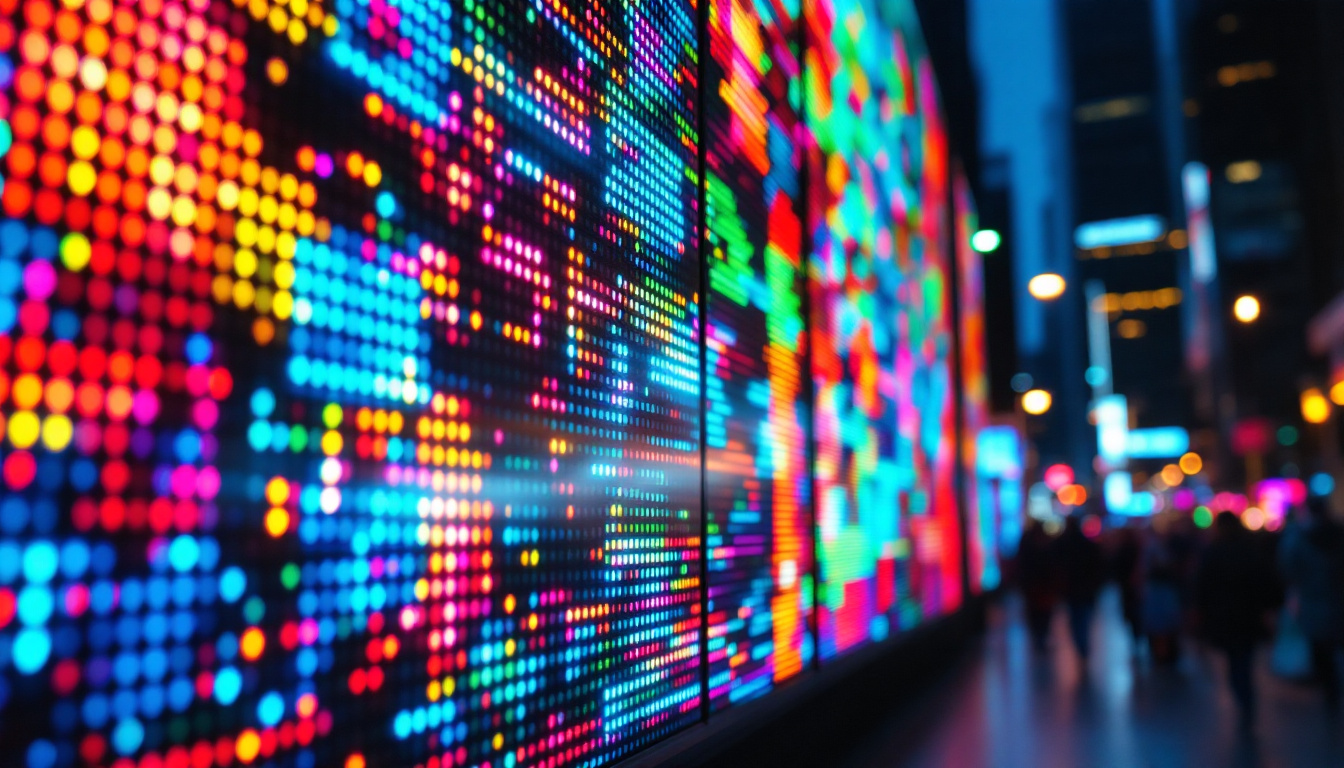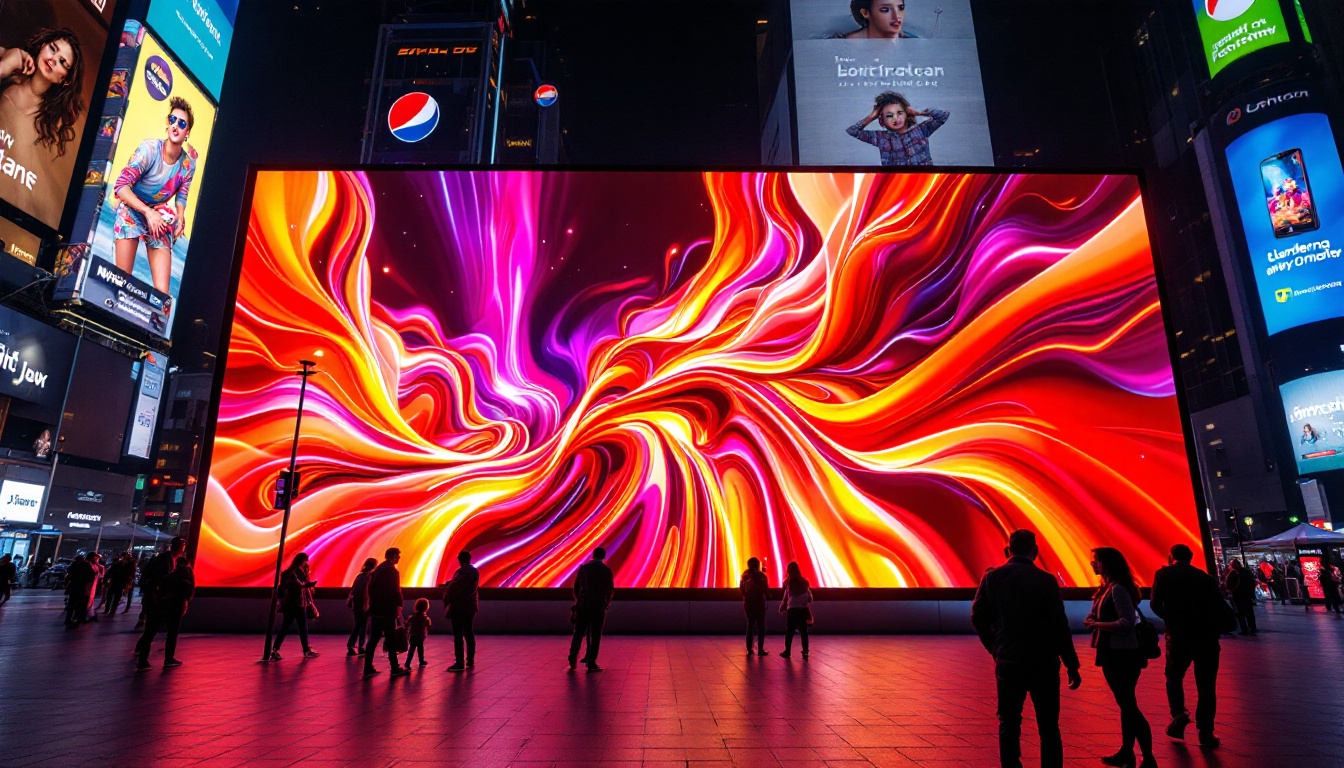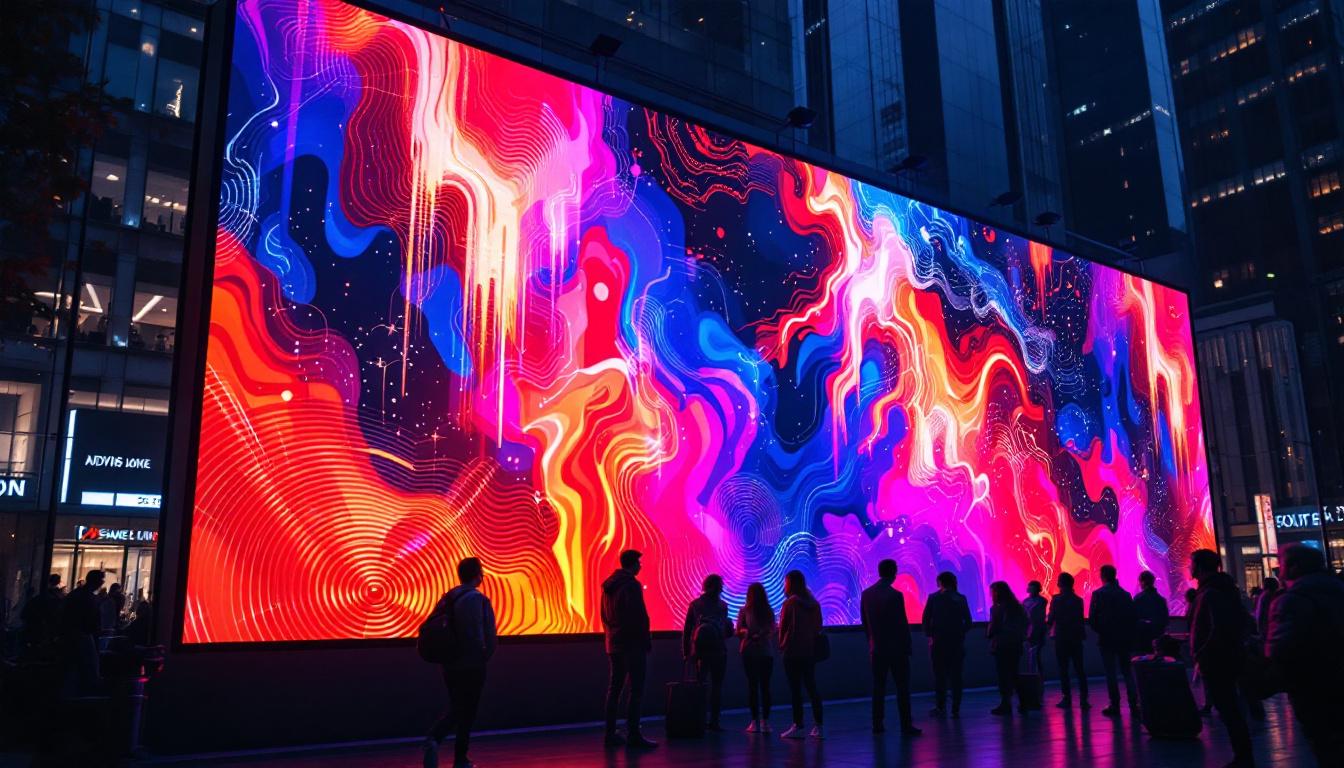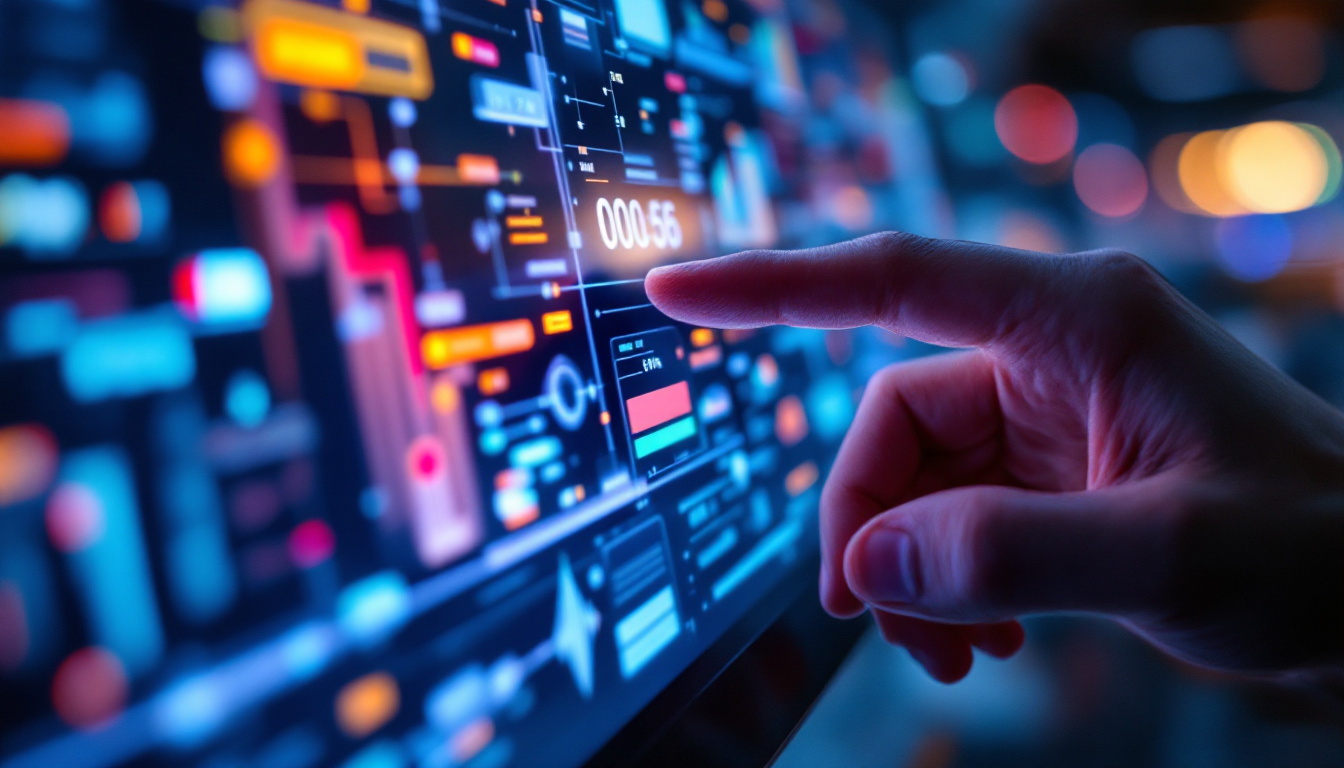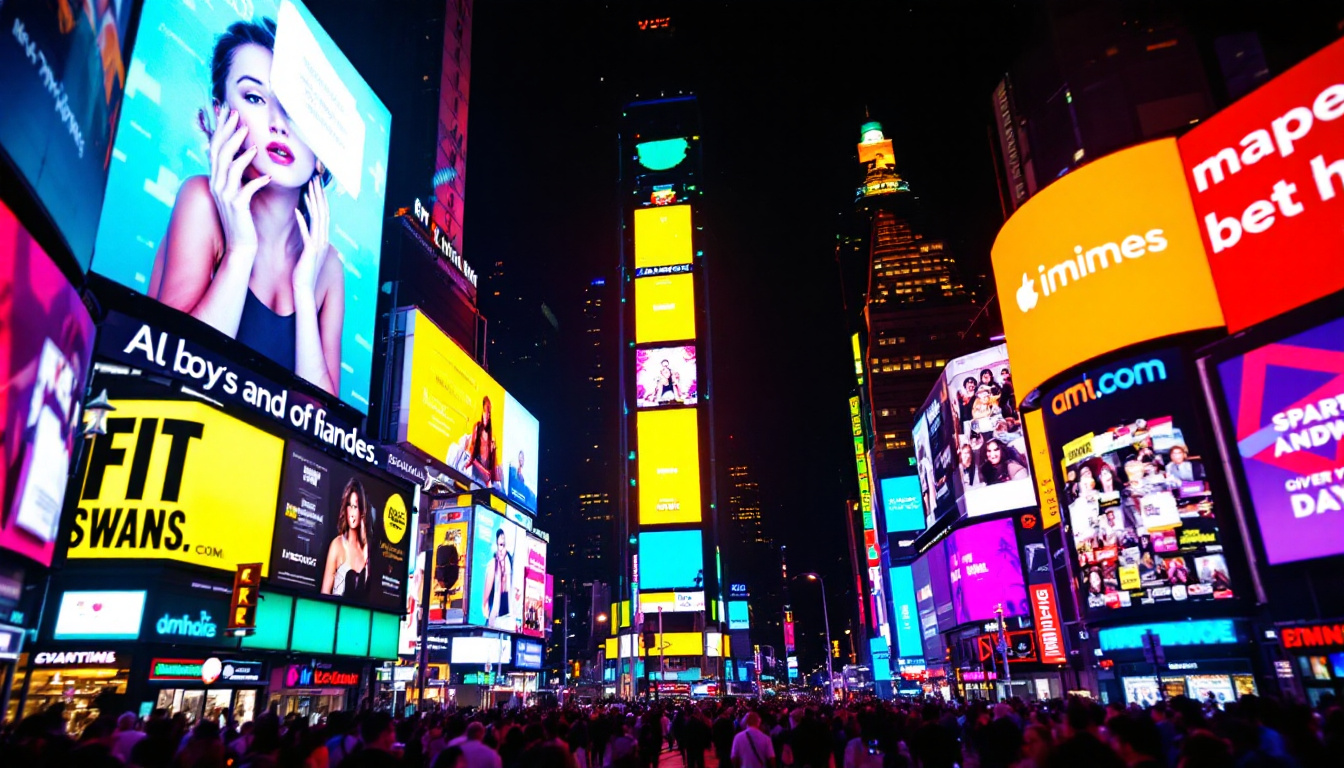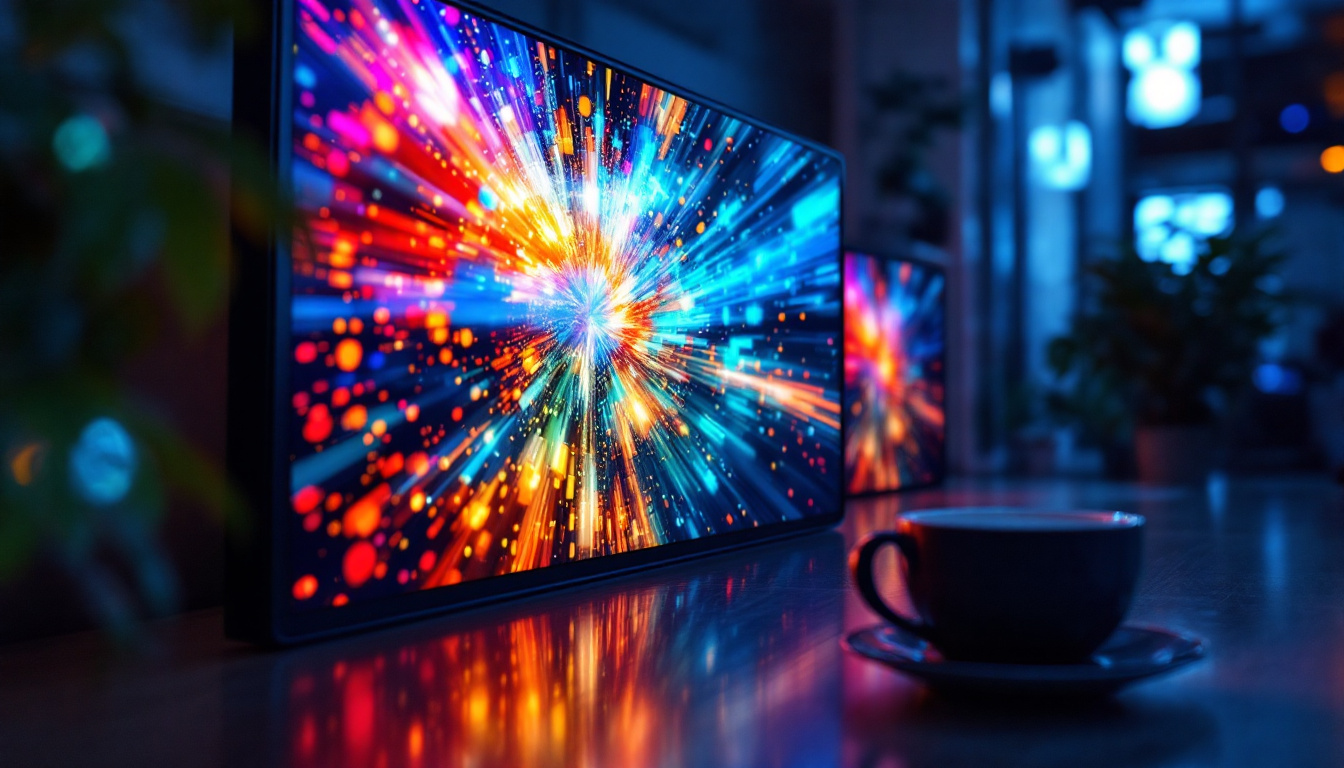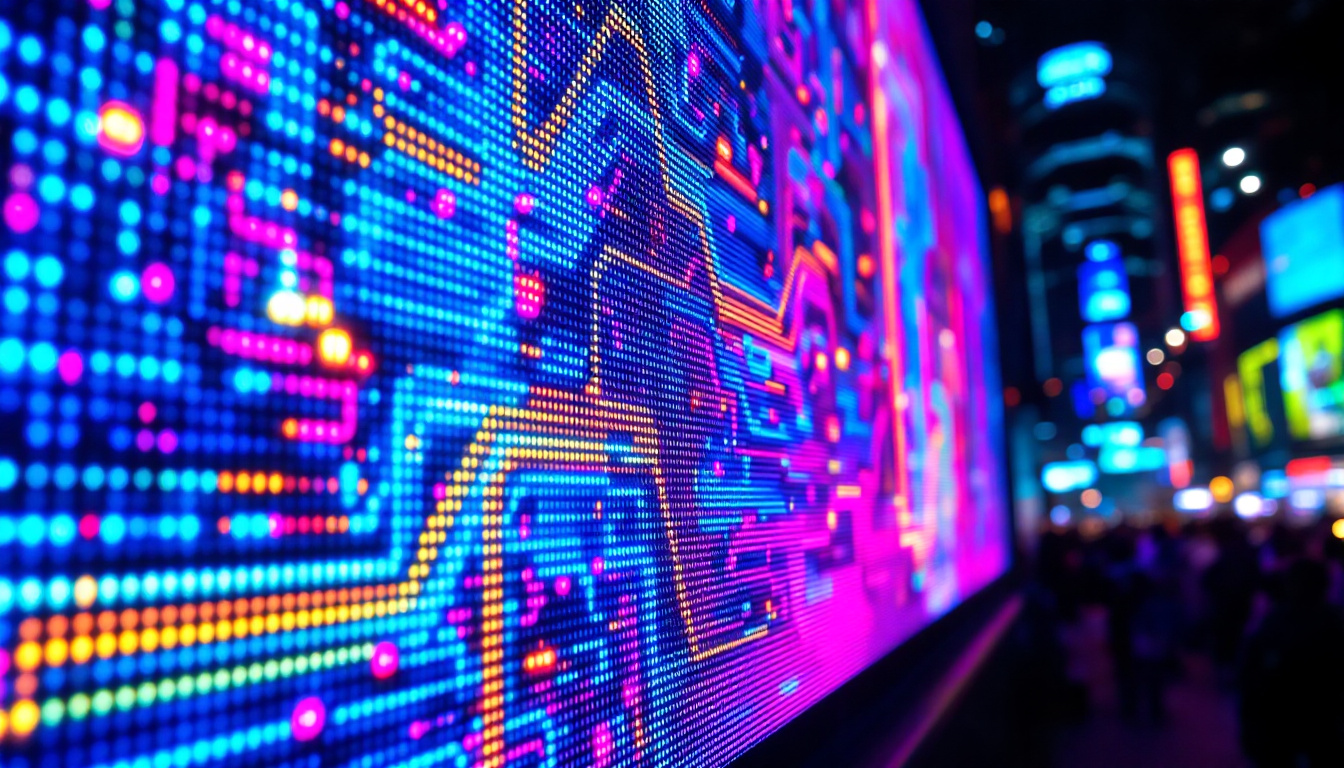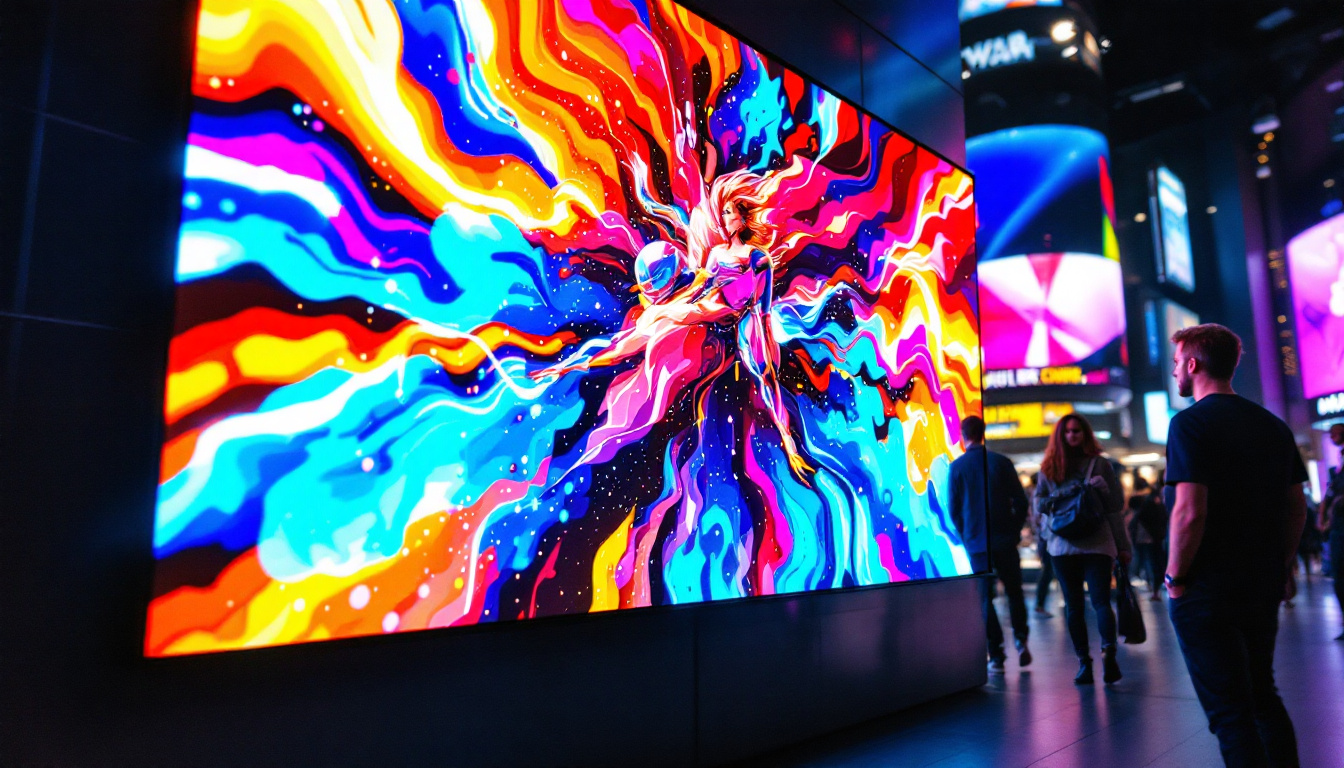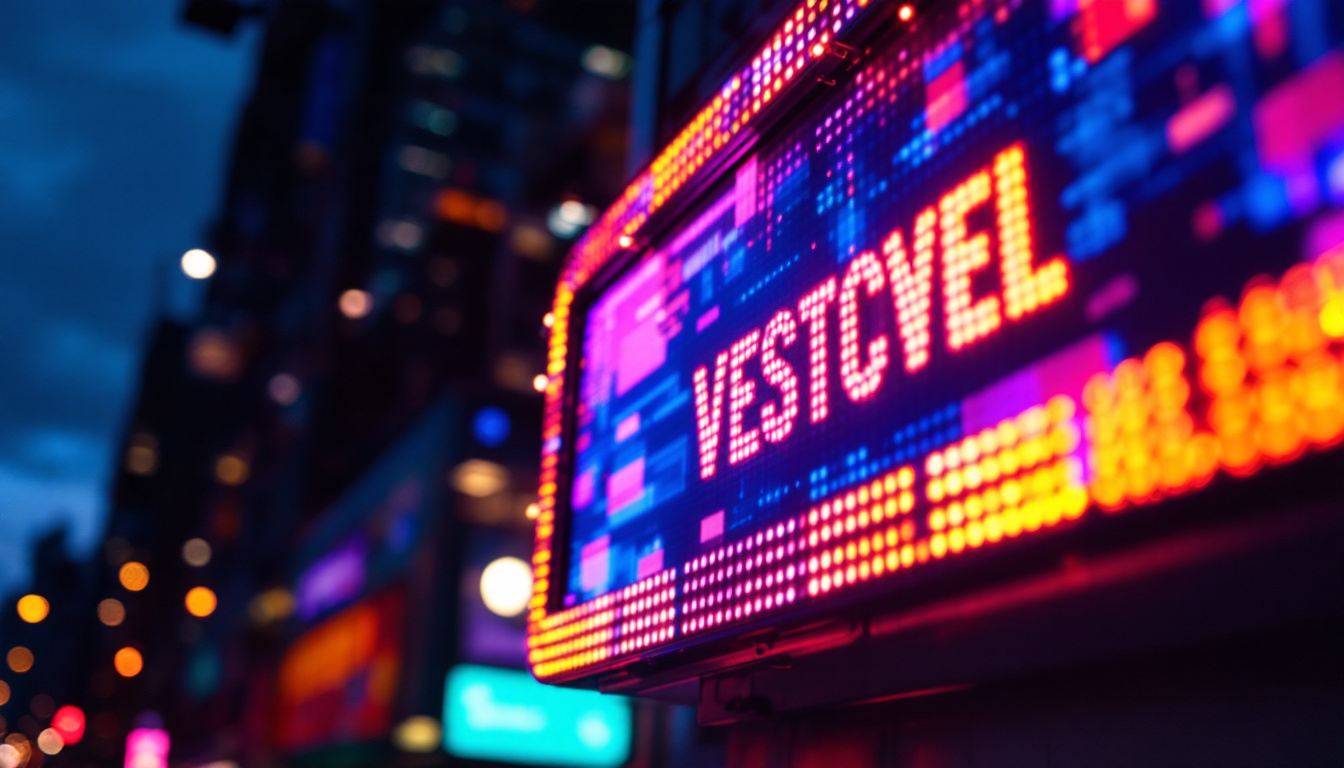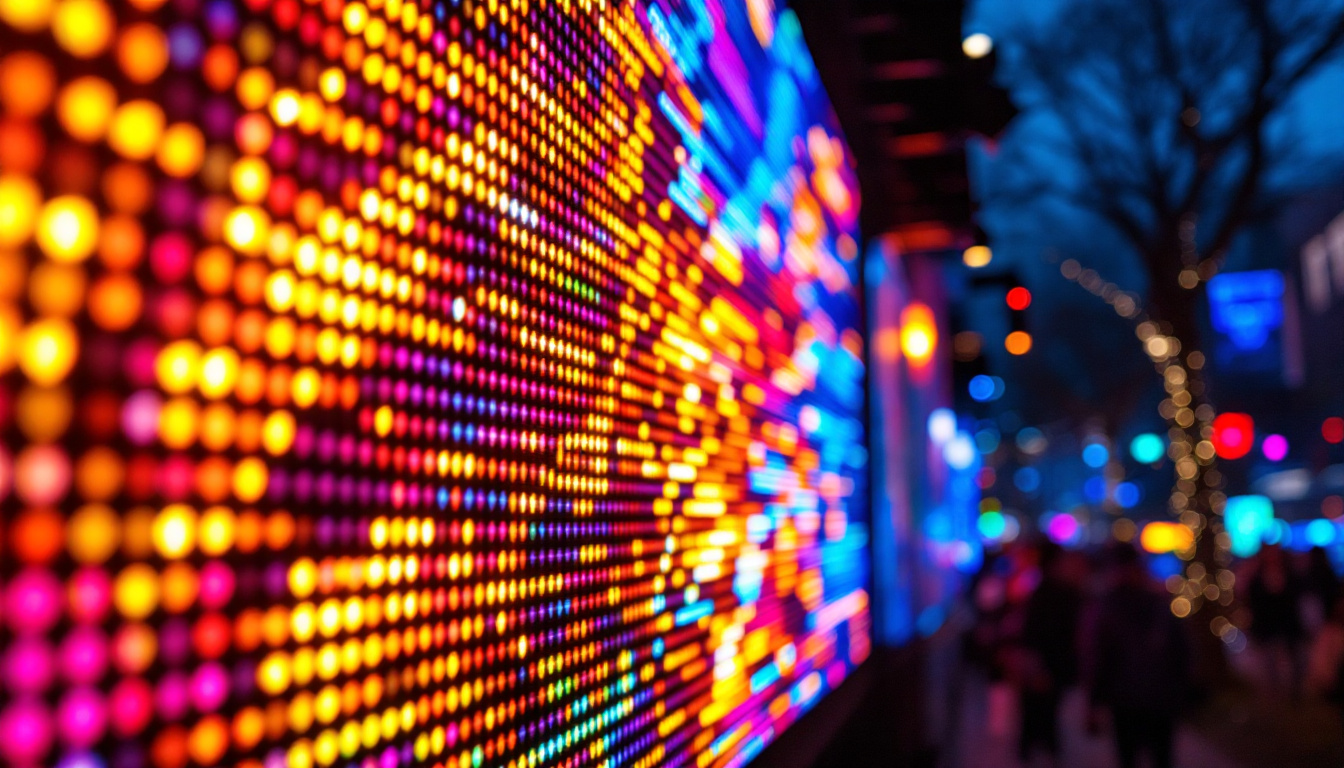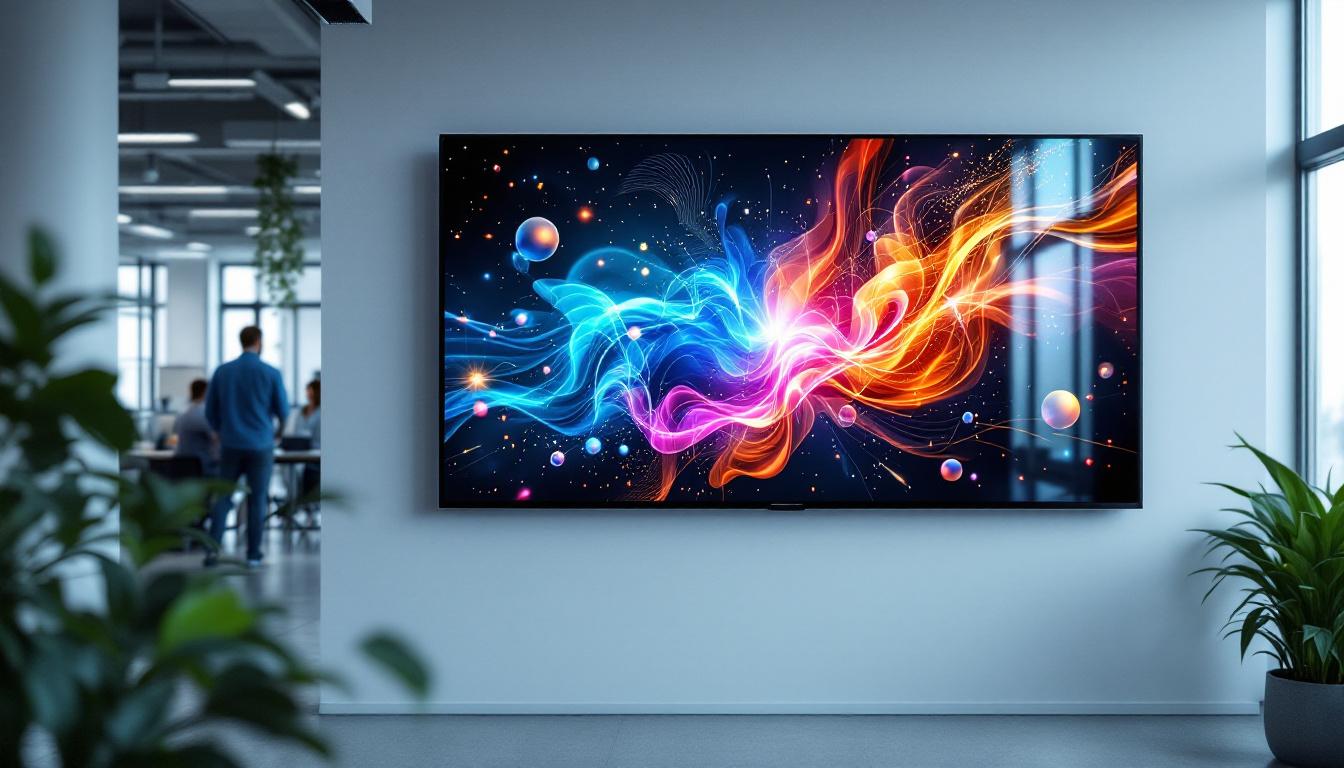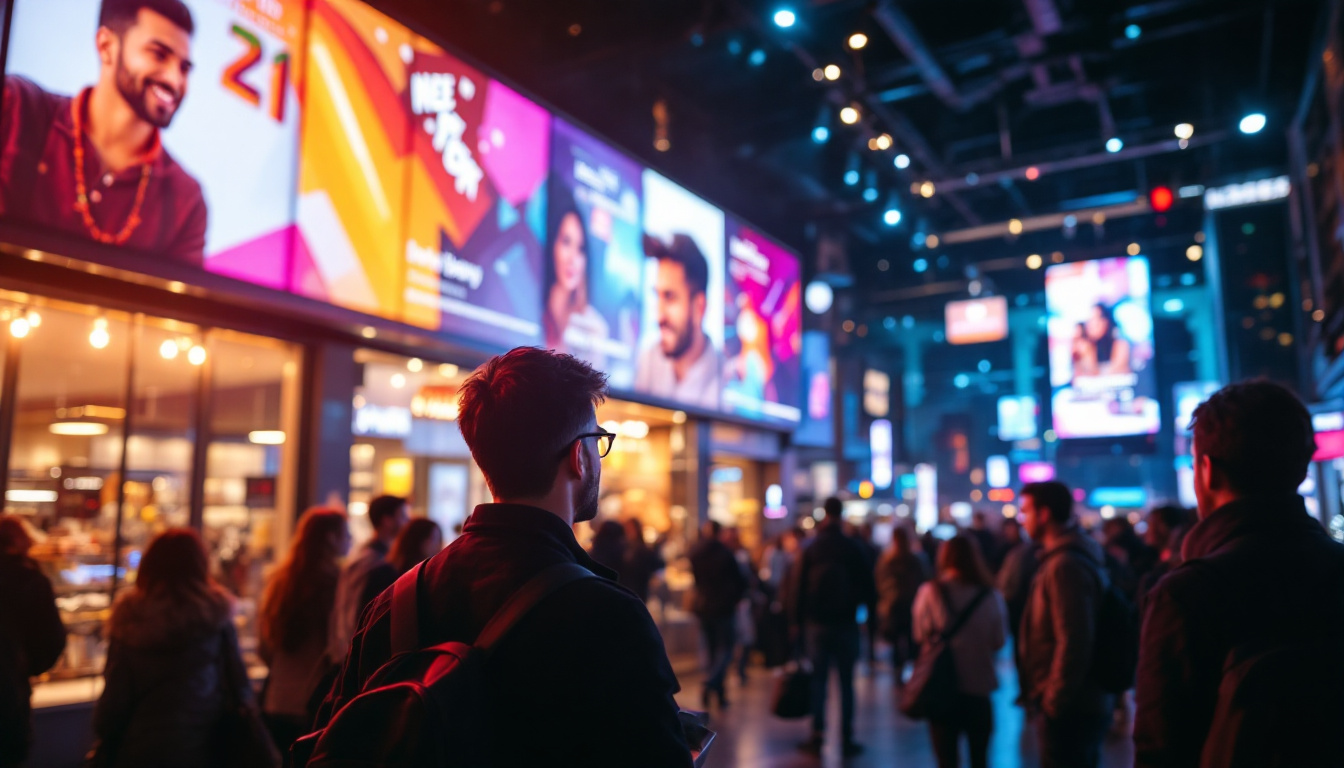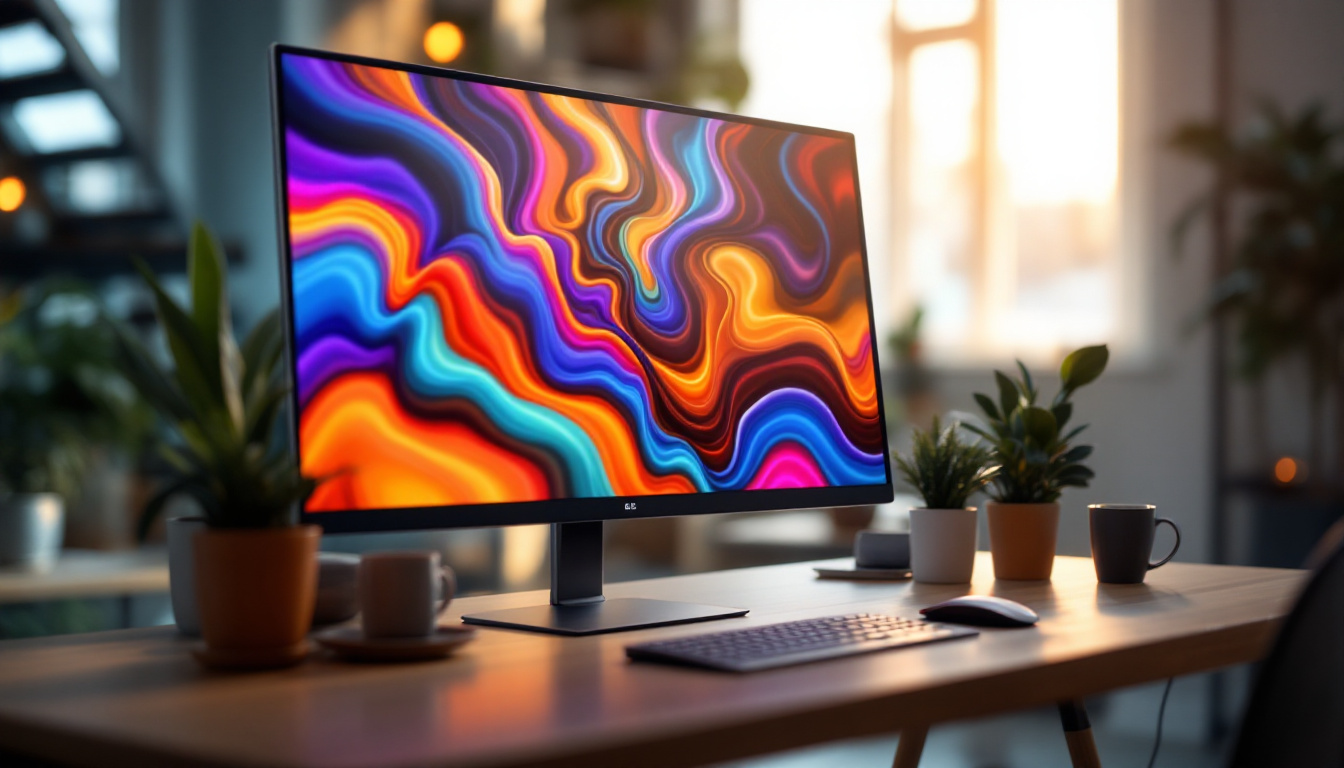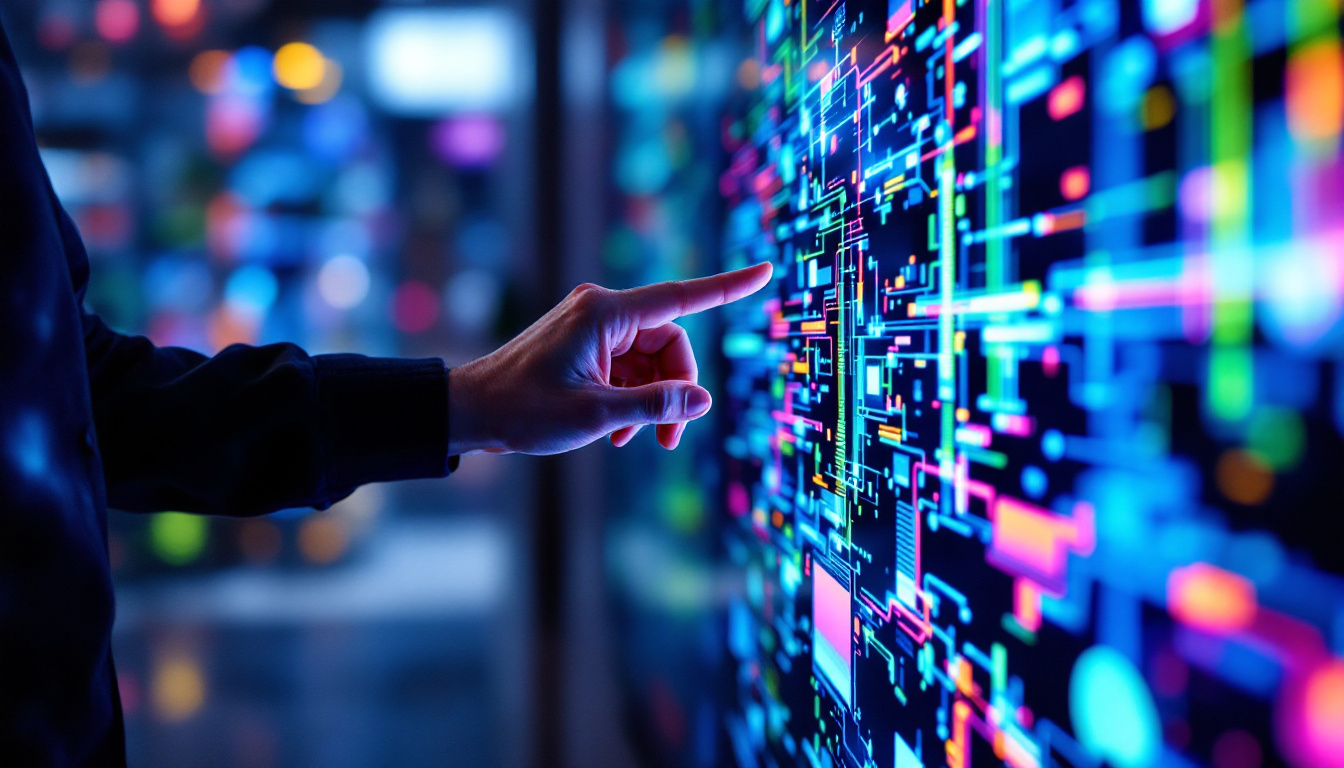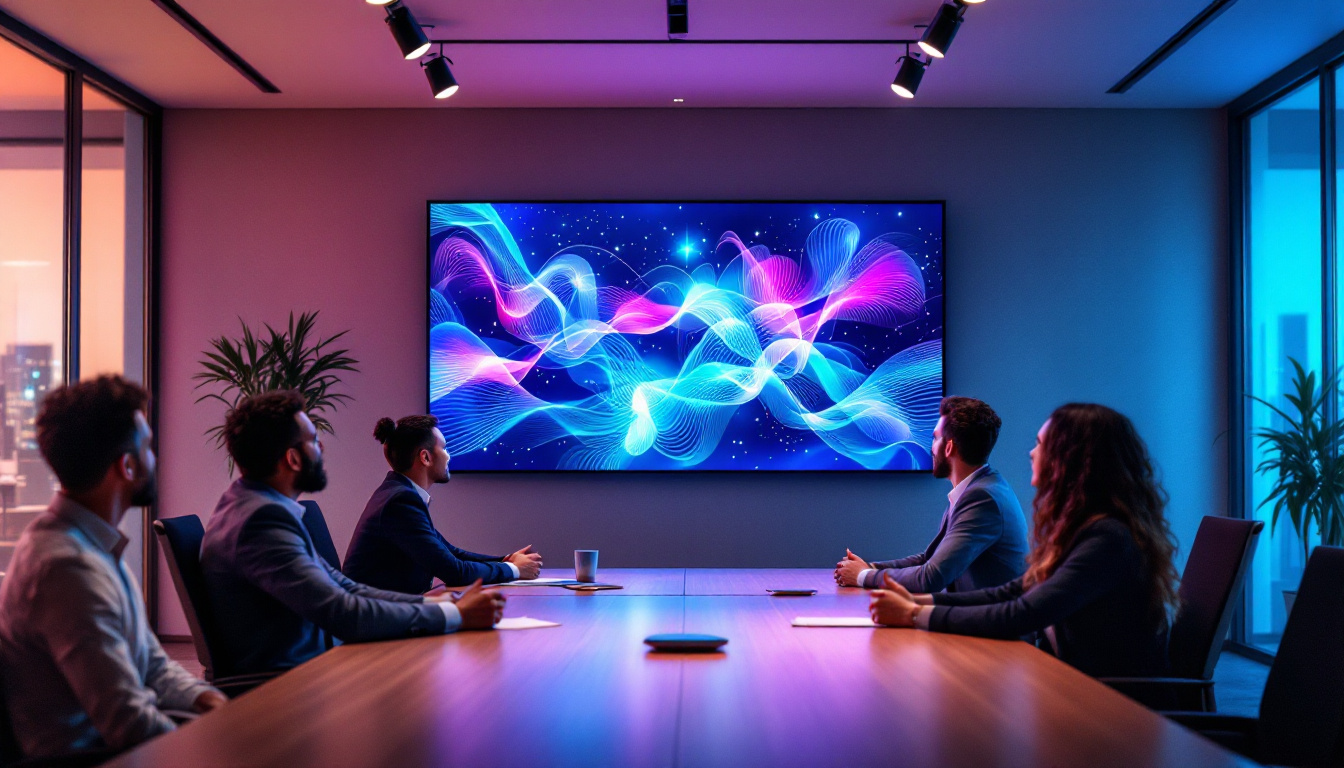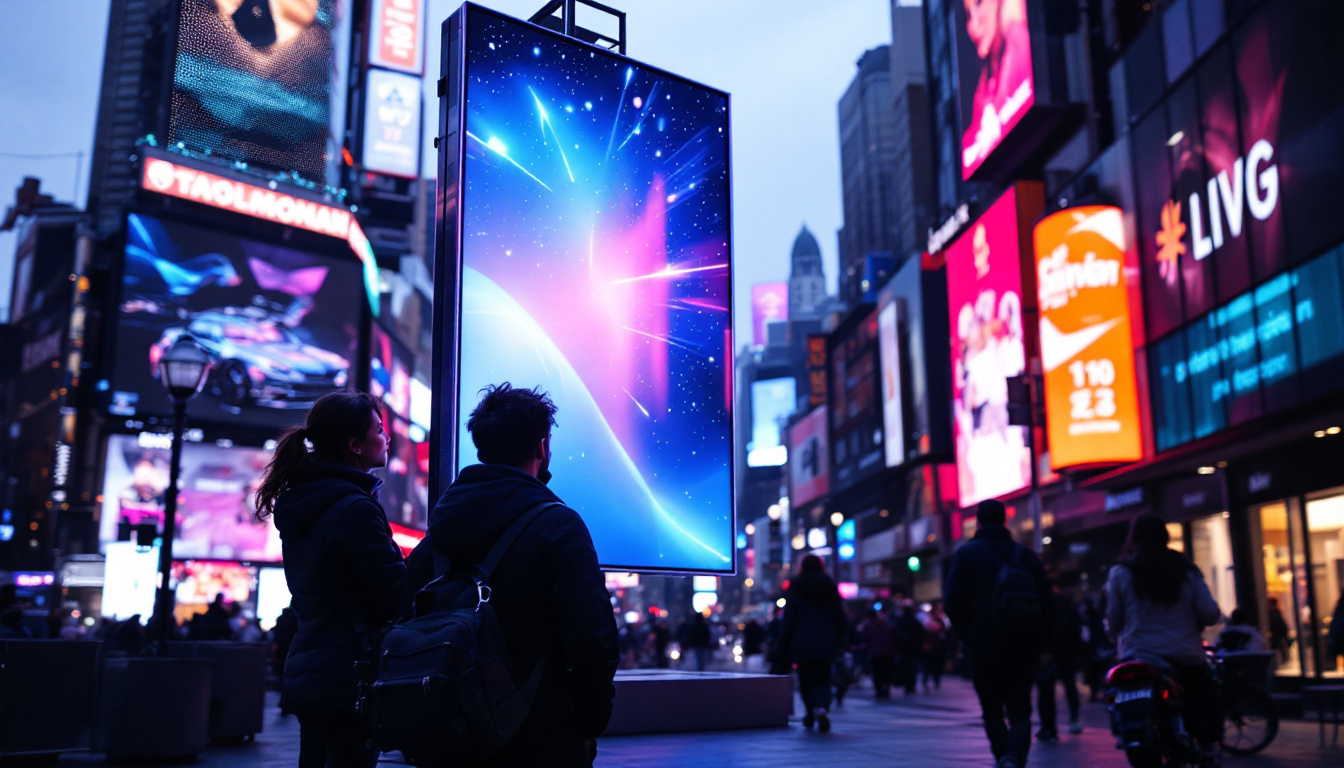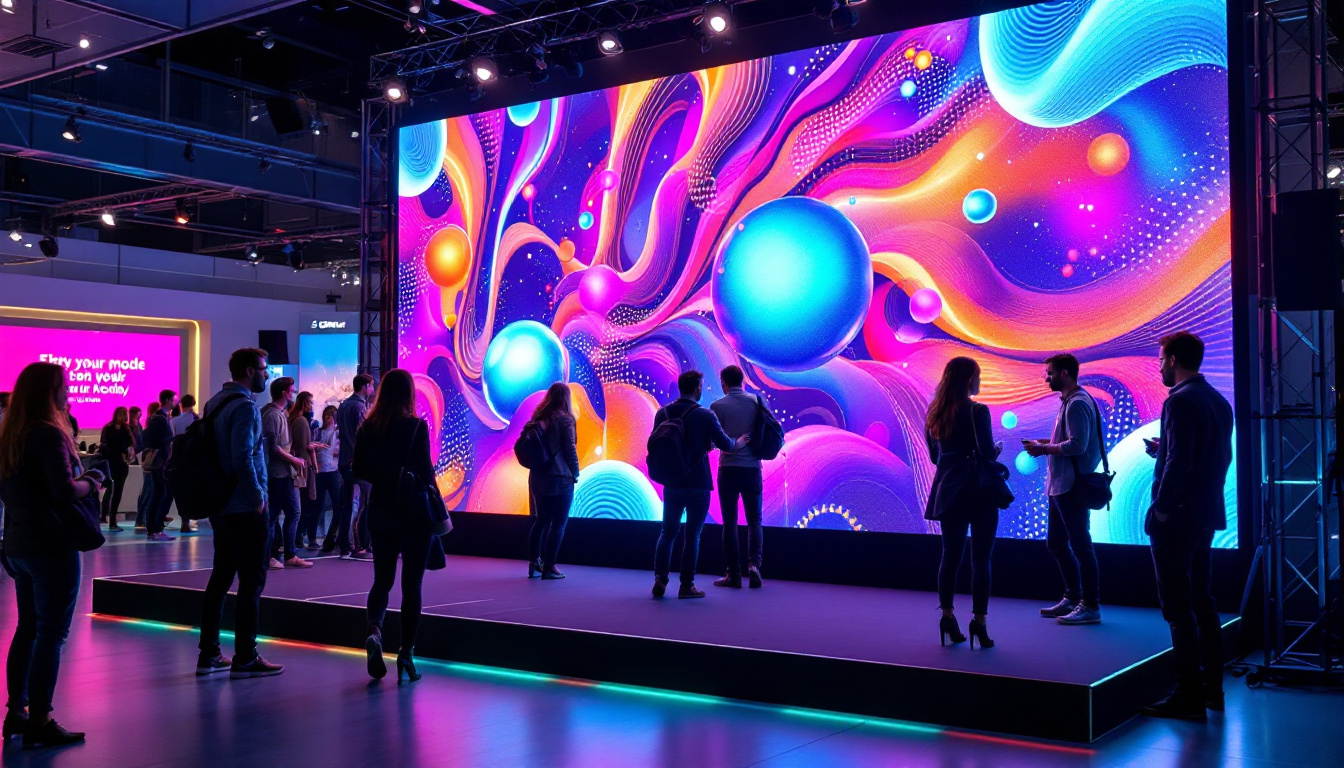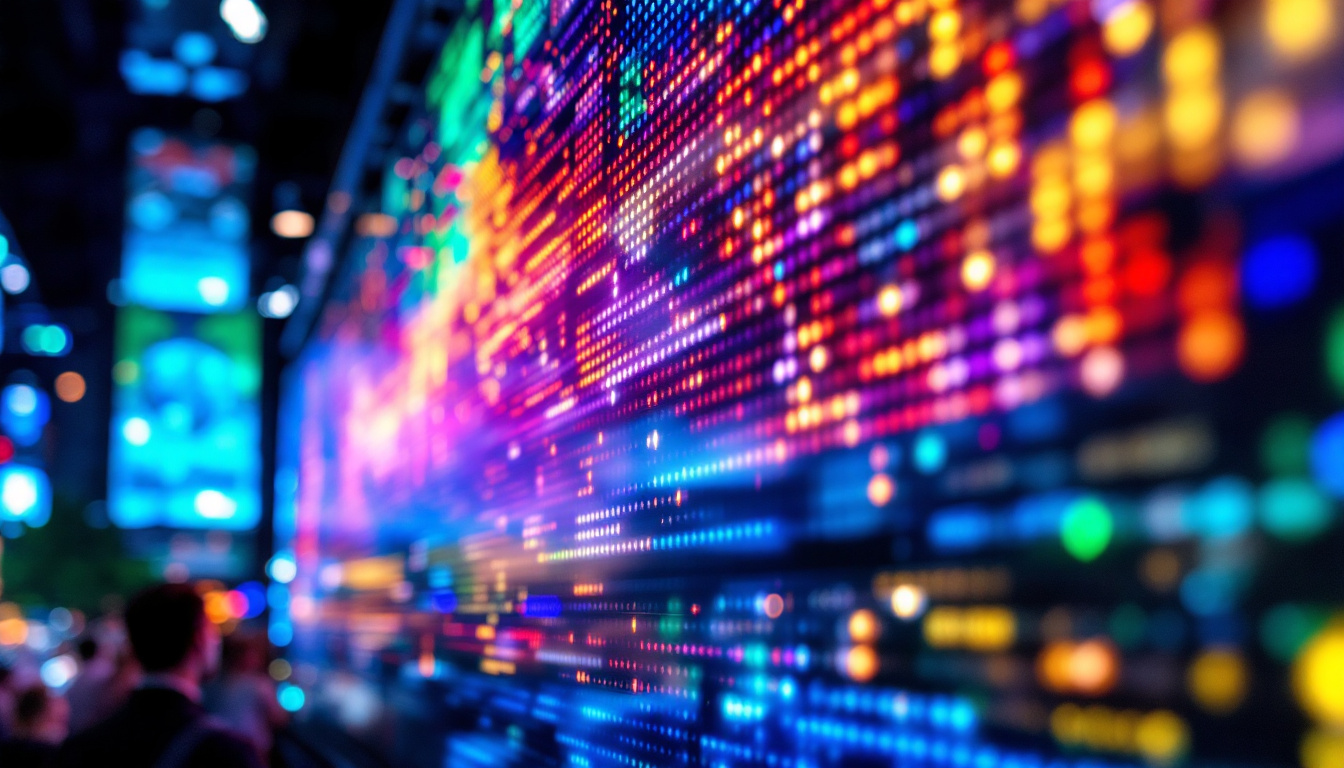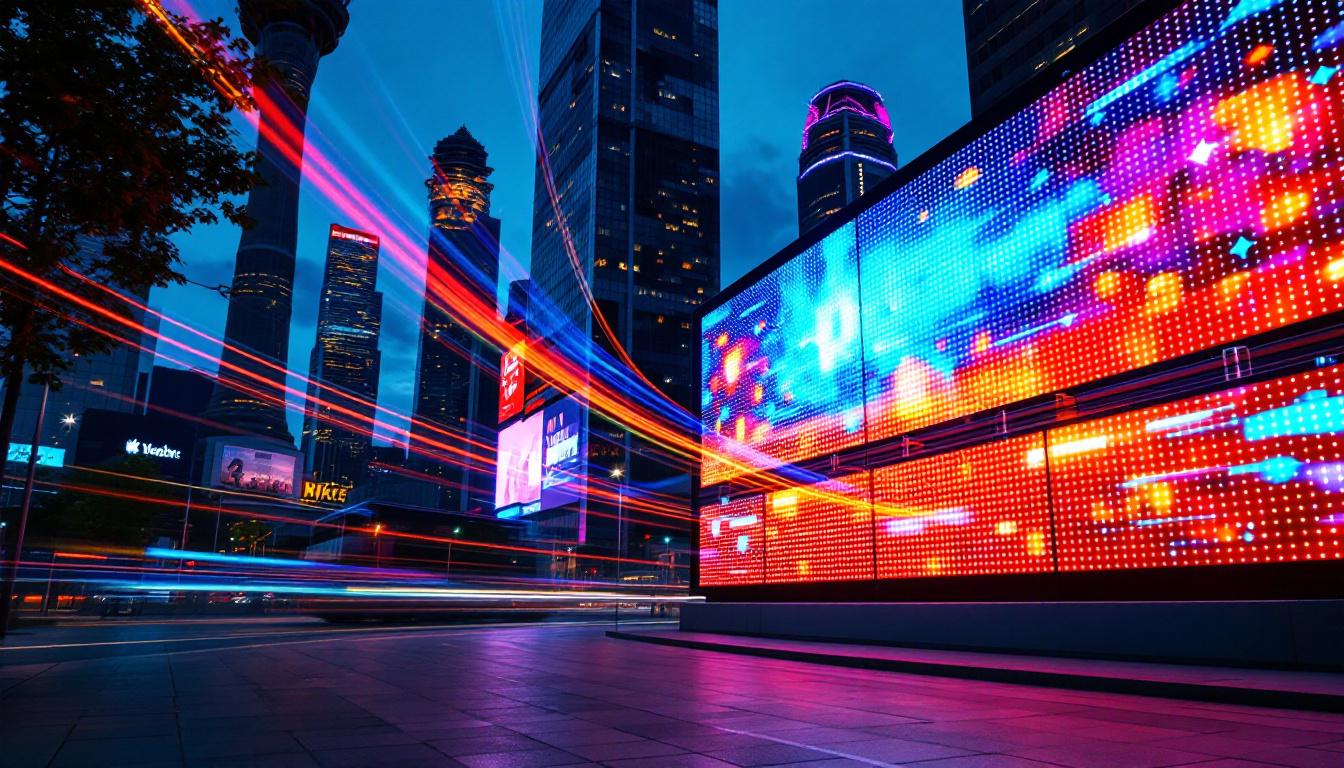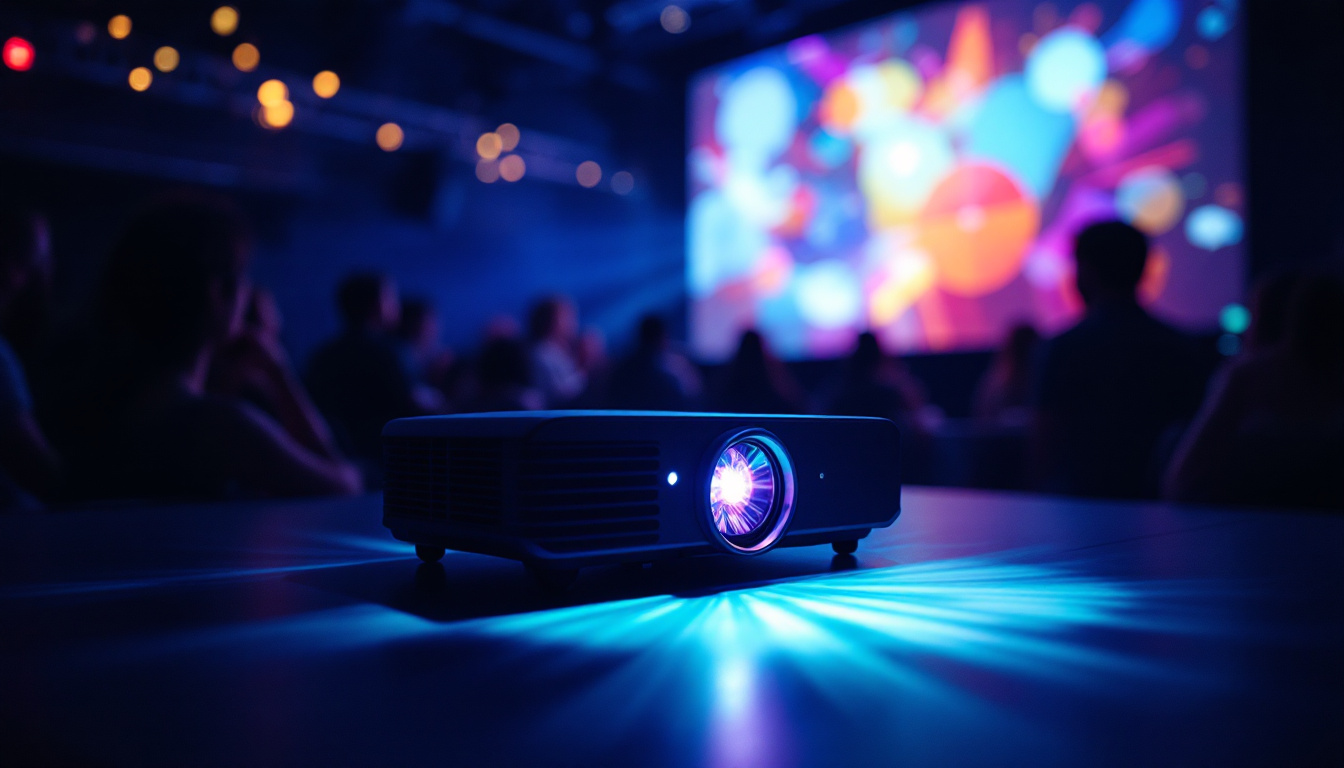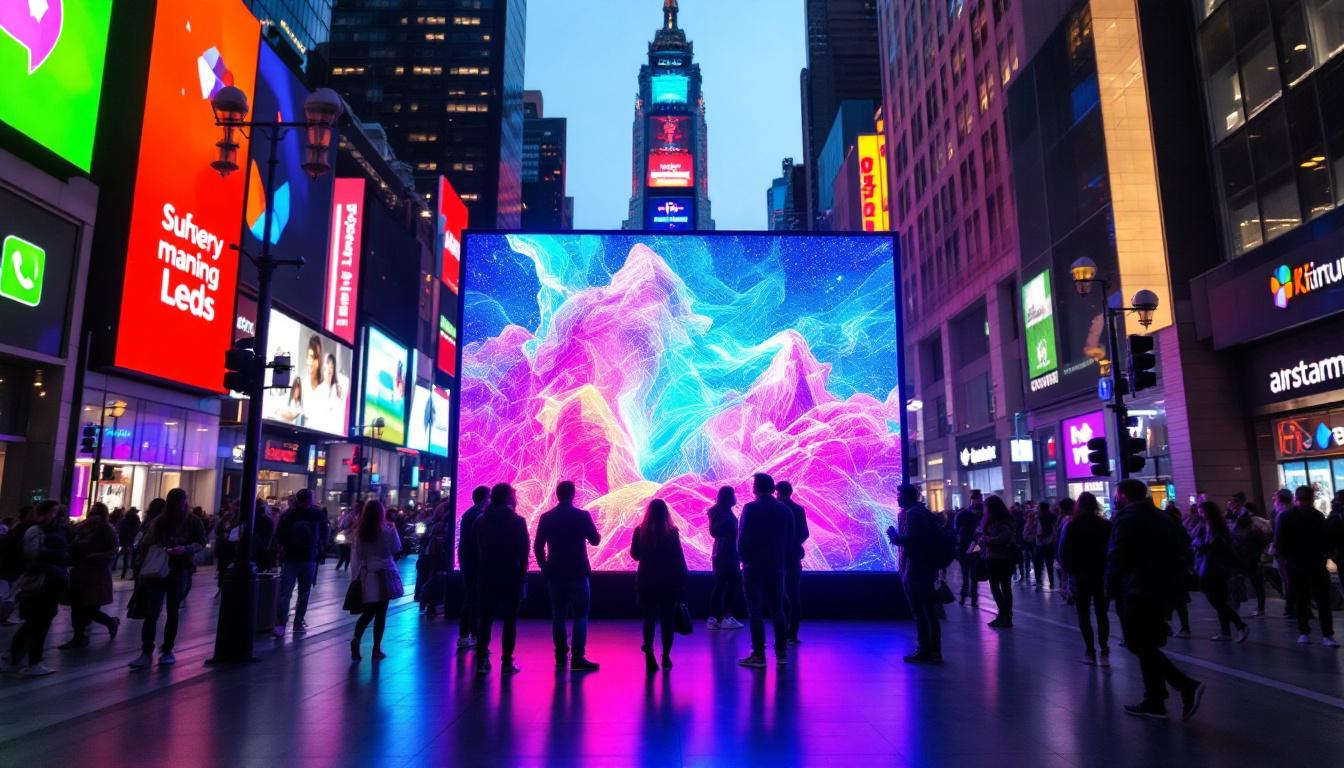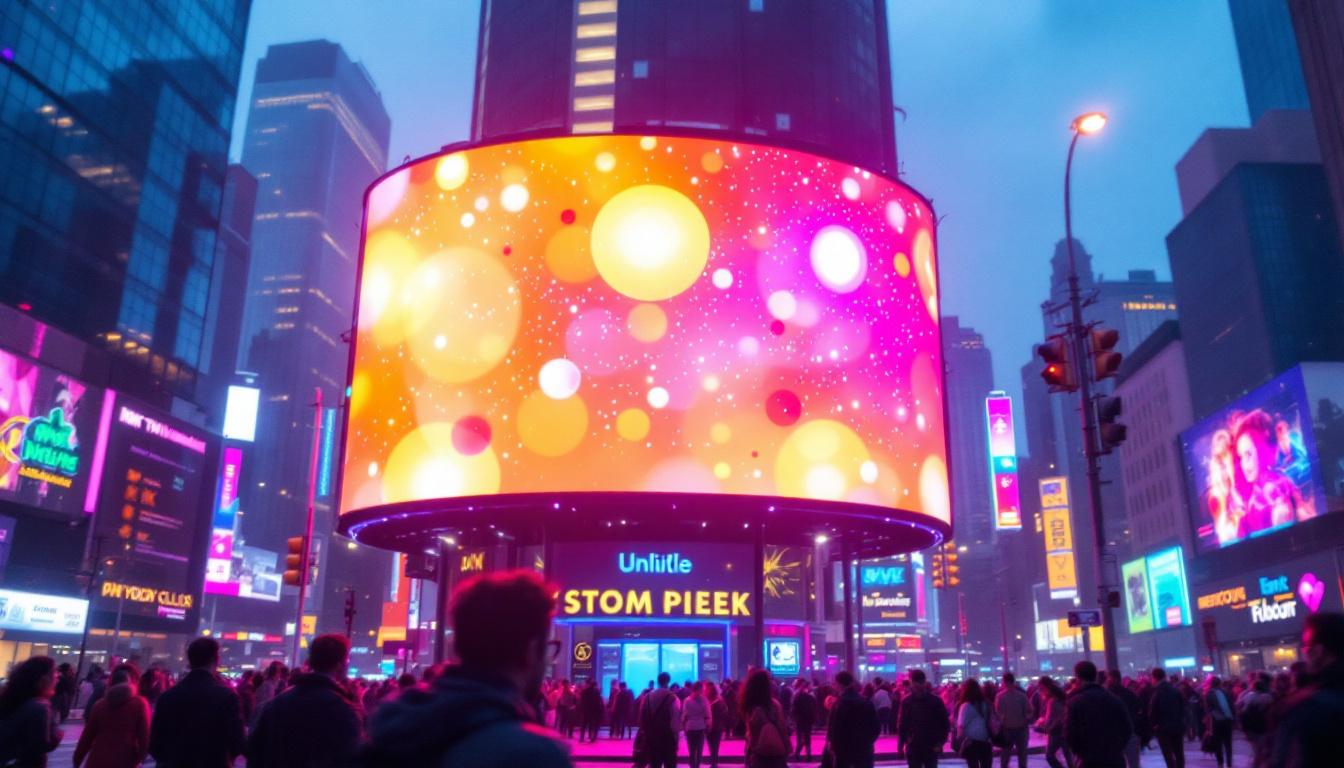In the modern world, LED displays have become an integral part of our daily lives, found in everything from smartphones to large outdoor billboards. Their ability to produce vibrant colors and sharp images has revolutionized the way we consume visual information. This article delves into the intricacies of LED displays, exploring their technology, applications, and future trends.
Understanding LED Technology
At the core of LED displays is the Light Emitting Diode (LED), a semiconductor device that emits light when an electric current passes through it. This technology has undergone significant advancements since its inception, leading to the development of full-color displays that can render images and videos with remarkable clarity. The versatility and efficiency of LED technology have made it a staple in various industries, from entertainment to advertising, and even in everyday household lighting solutions.
The Basics of LED Operation
LEDs operate on a simple principle: when electrons move through a semiconductor material, they release energy in the form of light. This process is known as electroluminescence. By manipulating the materials used in the semiconductor, manufacturers can create LEDs that emit different colors. The most common colors used in displays are red, green, and blue (RGB), which can be combined in various intensities to produce a full spectrum of colors. This RGB model is foundational for color mixing in digital displays, allowing for the creation of millions of hues and shades that enhance visual experiences.
In a typical LED display, each pixel is composed of multiple tiny LEDs, each representing one of the primary colors. By adjusting the brightness of each LED, the display can create a wide range of colors, allowing for the reproduction of detailed images and videos. This capability not only improves the aesthetic quality of the display but also enables dynamic content that can adapt to various environments, such as bright sunlight or dimly lit rooms.
Types of LED Displays
There are several types of LED displays, each suited for different applications. The most common types include:
- Direct View LED Displays: These displays use individual LEDs to create images and are often used in large outdoor screens and digital billboards. Their high brightness and durability make them ideal for advertising in bustling urban environments, where they can capture the attention of passersby even in bright daylight.
- LED Backlit LCD Displays: These displays use LEDs as a backlight for traditional LCD panels, enhancing brightness and color accuracy. This hybrid technology allows for thinner screens and improved energy efficiency, making it a popular choice for modern televisions and computer monitors.
- Organic LED (OLED) Displays: Utilizing organic compounds, these displays can produce deeper blacks and a wider color gamut, making them popular in high-end televisions and smartphones. The self-emissive nature of OLEDs allows for thinner designs and flexible screens, paving the way for innovative applications in wearable technology and curved displays.
In addition to these common types, there are also emerging technologies such as MicroLED and MiniLED, which promise even greater advancements in display quality and efficiency. MicroLED technology, for instance, consists of microscopic LEDs that can be arranged to form high-resolution displays without the need for backlighting, offering superior contrast ratios and energy savings. As research and development continue in the field of LED technology, we can expect to see even more groundbreaking applications that enhance our visual experiences in everyday life.
Applications of LED Displays
LED displays are versatile and find applications across various industries. Their ability to deliver high-quality visuals makes them ideal for numerous settings.
Advertising and Marketing
One of the most prominent uses of LED displays is in advertising. Digital billboards and signage can capture attention with vibrant colors and dynamic content. Advertisers can change messages in real-time, allowing for targeted marketing based on time of day or audience demographics. This flexibility enhances engagement and can lead to increased sales. Additionally, the ability to incorporate animations and videos into advertisements makes LED displays more appealing than traditional static billboards. Brands can create memorable experiences that resonate with consumers, ultimately fostering brand loyalty.
Entertainment and Events
In the entertainment industry, LED displays have transformed how audiences experience live events. Concerts, sports games, and festivals utilize large LED screens to enhance the visual experience. These displays can show live feeds, graphics, and animations, creating an immersive environment that captivates attendees. Beyond just visuals, LED technology allows for synchronized light shows that can elevate performances to new heights, making each event unique. Furthermore, the portability of LED display panels enables organizers to set up customized viewing experiences tailored to specific venues, ensuring that no matter where you sit, the view is spectacular.
Information Display
LED displays are also widely used for information dissemination. Transportation hubs, such as airports and train stations, employ LED screens to provide real-time updates on schedules and delays. Similarly, educational institutions use LED displays for announcements and interactive learning experiences. These screens can display important safety information, event schedules, and even interactive maps to help navigate complex environments. In corporate settings, LED displays serve as effective communication tools for meetings and conferences, allowing for clear presentation of data and visuals that enhance understanding and retention among participants.
Advantages of LED Displays
The rise of LED technology can be attributed to several key advantages it offers over traditional display technologies.
Energy Efficiency
LED displays are known for their energy efficiency. They consume significantly less power compared to older technologies like incandescent and fluorescent displays. This not only reduces operational costs but also contributes to environmental sustainability. In fact, the lower energy consumption of LED displays can lead to substantial savings over time, especially for businesses that rely on large-scale digital signage or advertising. Moreover, as energy costs continue to rise, the financial benefits of switching to LED technology become even more pronounced, making it a smart investment for both commercial and residential applications.
Longevity and Durability
Another major benefit of LED displays is their longevity. A well-manufactured LED display can last up to 100,000 hours, far exceeding the lifespan of traditional displays. Additionally, they are more resistant to shocks and vibrations, making them ideal for outdoor use where they are exposed to the elements. This durability not only reduces the frequency of replacements but also minimizes maintenance costs, allowing users to focus on their core activities rather than worrying about display failures. Furthermore, many LED displays are designed with weather-resistant features, ensuring they can withstand harsh conditions such as rain, snow, and extreme temperatures, which is particularly advantageous for businesses operating in diverse climates.
High Brightness and Contrast
LED displays can achieve high brightness levels, making them suitable for both indoor and outdoor environments. Their ability to maintain color accuracy and contrast in various lighting conditions ensures that images remain vivid and clear, even in direct sunlight. This characteristic is especially beneficial for advertising and promotional displays, where capturing the attention of passersby is crucial. Additionally, the advanced technology behind LED displays allows for a wider color gamut, enabling more vibrant and lifelike images. As a result, businesses can create more engaging content that resonates with their audience, enhancing the overall effectiveness of their marketing strategies. The versatility of LED displays also means they can be utilized in a variety of settings, from retail environments to concert venues, further expanding their appeal and functionality.
Challenges and Considerations
Despite their advantages, LED displays are not without challenges. Understanding these challenges is crucial for making informed decisions regarding their use.
Cost Implications
While the prices of LED displays have decreased over the years, they can still be more expensive upfront compared to traditional display technologies. This initial investment can be a barrier for smaller businesses or organizations with limited budgets. However, the long-term savings in energy and maintenance costs often justify the expense.
Color Calibration and Consistency
Another challenge lies in color calibration. Ensuring that colors are consistent across different displays can be difficult, especially in large installations. Variations in manufacturing processes can lead to discrepancies in color reproduction, which can affect the overall visual experience. Regular calibration and maintenance are essential to mitigate these issues.
Heat Management
LED displays generate heat during operation, which can impact their performance and lifespan if not properly managed. Adequate cooling systems are necessary, especially for large installations, to prevent overheating and ensure optimal functionality.
The Future of LED Displays
The future of LED technology looks promising, with ongoing advancements poised to enhance performance and expand applications.
MicroLED Technology
MicroLED is an emerging technology that promises to revolutionize the display industry. Unlike traditional LEDs, MicroLEDs are much smaller, allowing for higher pixel density and improved image quality. This technology could lead to displays that are thinner, lighter, and more versatile, opening up new possibilities for consumer electronics and large-scale installations.
Integration with Smart Technology
As smart technology continues to evolve, LED displays are increasingly being integrated with IoT (Internet of Things) systems. This integration allows for enhanced interactivity and connectivity, enabling displays to respond to user inputs and environmental changes. For instance, smart signage can adapt content based on audience demographics or weather conditions, providing a tailored experience.
Advancements in Color Accuracy
Future developments in LED technology are also focused on improving color accuracy and reproduction. Innovations in materials and manufacturing processes aim to create displays that can render colors more faithfully, enhancing the viewing experience for users across various applications.
Conclusion
LED displays have transformed the way we interact with visual content, offering vibrant colors, energy efficiency, and durability. Their applications span a wide range of industries, from advertising to entertainment, making them indispensable in today’s digital landscape. While challenges exist, ongoing advancements in technology promise to address these issues and unlock new possibilities for the future.
As the demand for high-quality visual experiences continues to grow, LED displays will undoubtedly play a pivotal role in shaping the future of communication, entertainment, and information dissemination. Understanding the intricacies of this technology is essential for businesses and consumers alike, ensuring that they can leverage its full potential.
Explore Cutting-Edge LED Displays with LumenMatrix
Ready to elevate your visual experience with the latest in LED display technology? LumenMatrix is at the forefront of innovation, offering a diverse range of LED display solutions tailored to meet your needs. From captivating Indoor and Outdoor LED Wall Displays to dynamic Vehicle and Sports LED Displays, our products are designed to make your brand shine. Discover the possibilities with our Custom, All-in-One, and Transparent LED Displays, and see how our Floor LED Displays can transform any space. Embrace the future of visual communication with LumenMatrix and Check out LumenMatrix LED Display Solutions today to create unforgettable visual experiences.

